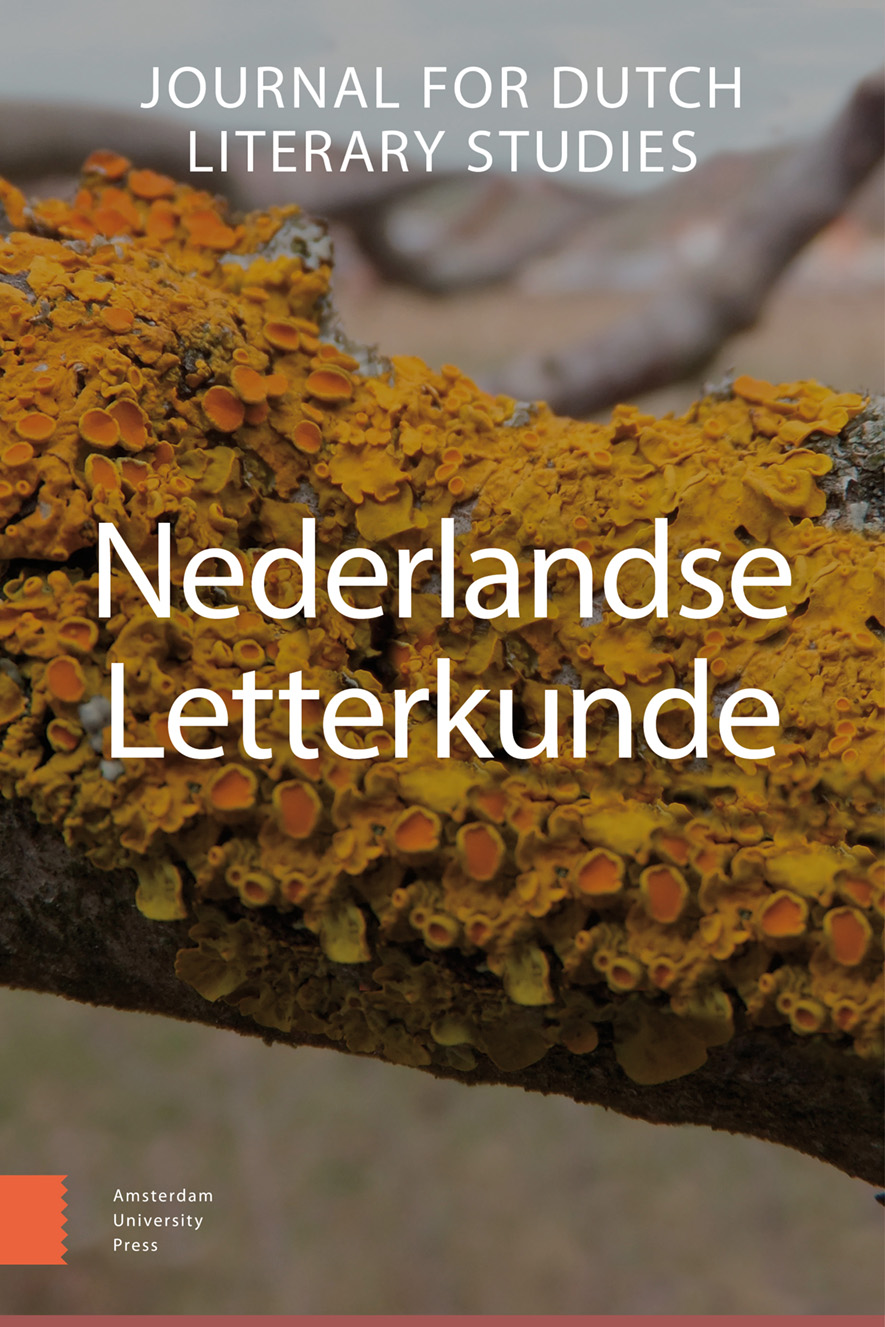- Home
- A-Z Publications
- Nederlandse Letterkunde
- Previous Issues
- Volume 15, Issue 2, 2010
Nederlandse Letterkunde - Volume 15, Issue 2, 2010
Volume 15, Issue 2, 2010
Language:
English
-
-
Acceptatie van het vreemde - Pers- en geloofsvrijheid in de Republiek vanuit internationaal perspectief
More LessAuthors: Both Bert & Stronks ElsDuring the majority of the seventeenth century, religious literature produced in the Dutch Republic contained far fewer illustrations than the religious literature produced in the Southern Netherlands, England and Germany. The relative freedom with which different denominations and their attendant ideologies coexisted in the seventeenthcentury Dutch Republic, would seem to provide an ideal setting for the integration of ol Read More
-
-
-
‘Toongeefster van den goeden smaak’ - De Hollandsche Maatschappij van Fraaije Kunsten en Wetenschappen, 1813-1833
More LessBy Honings RickDuring de second half of the eighteenth and the first decades of the nineteenth century the literary societies were the most influential authorities in the literary life. They were the places where the debates about the function and purpose of literature were hold. After the thirties they lost their position to the cultural and literary magazines. This article concentrates on the Hollandsche Maatschappij van Fraaije Kunsten en Wetens Read More
-
-
-
Petrus van Limburg Brouwer - als vertaler van de autobiografie van Benvenuto Cellini. Een ‘tegennatuurlijke lezing’ van Het leven van Benvenuto Cellini (1843)
More LessBy van RobIn 1843, the Groningen classicist Petrus van Limburg Brouwer (father of P.A.S. van Limburg Brouwer, the author of the orientalist novel Akbar) published a candid translation of the autobiography of the Italian Renaissance artist Benvenuto Cellini; the translation does not shy away from references to homosexuality. A study of the applicability of concepts taken from queer studies and conceptual history studies of the natu Read More
-
-
-
De uitgever als poortwachter?
More LessBy Laan NicoPublishers are often compared to gatekeepers both on account of the role they play in the selection process as on account of their vital contribution to the social recognition of authorship. The comparison signals an important phenomenon but has its limitations. The first is of a historical nature. For centuries the printing culture coexisted with the much older manuscript culture. Publishers only started to play a ke Read More
-
Volumes & issues
Most Read This Month
Article
content/journals/13845829
Journal
10
5
false
en


